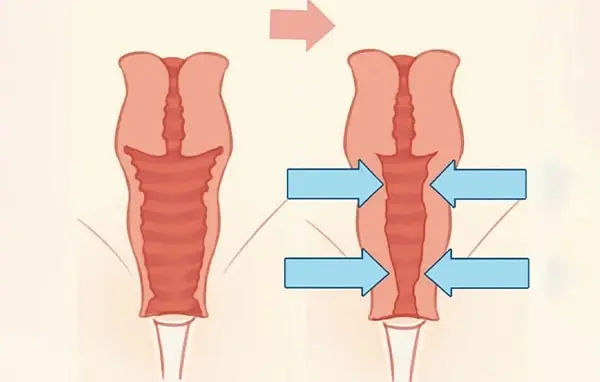Vaginal Laxity: Treatment Options
What is Vaginal Laxity?
Vaginal laxity is a condition where the muscles and tissues surrounding the vaginal opening lose their firmness and tone. This leads to an increase in vaginal diameter, both internally and externally, as well as thinning of the vaginal walls.
This laxity can be caused by various factors, such as childbirth, aging, or hormonal changes. As a result, vaginal laxity can reduce sensation during sexual intercourse, affecting a woman's sexual pleasure and satisfaction.
This decrease in intimate satisfaction can impact marital life and self-confidence, making this condition not only physical but also emotional and psychological.
What Causes Vaginal Laxity?
One of the main causes of vaginal laxity is vaginal delivery, which stretches and weakens the vaginal muscles and tissues. This can also lead to a decrease in vaginal mucosal hydration due to reduced natural lubrication.
Aging and menopause also contribute to vaginal laxity, as they cause a decrease in the sensitivity and elasticity of vaginal tissues during sexual intercourse.
Furthermore, it's important to note that multiple pregnancies and frequent sexual intercourse can worsen vaginal laxity. Repeated friction and widening of the sensitive area can lead to vulvar gaping, further enhancing the feeling of laxity.
GET A QUICK QUOTE
For more information
Your health, our priority.
Request your free quote
How to Treat Vulvar Gaping?
Fortunately, today there are advanced treatments and techniques to remedy vaginal laxity, offering a comprehensive solution for the rehabilitation and tightening of the pelvic floor muscles.
Vaginal Rejuvenation
Vaginal rejuvenation using laser is a procedure that aims to restore the firmness, elasticity, and function of vaginal tissues. Using advanced techniques such as radiofrequency, laser, or surgery, this procedure can improve the appearance and sensation of the vagina, while increasing natural lubrication and sensitivity during sexual intercourse. Vaginal rejuvenation offers an effective solution for women seeking to regain confidence and improve their intimate quality of life.
Quadripolar Radiofrequency
Vaginal rejuvenation involves stimulating the natural production of collagen and the renewal of vaginal tissue cells. This stimulation, combined with the thermal effect generated by the treatment on the vaginal wall, strengthens the tissues connecting the vagina to the urinary system. Thanks to this technique, the vaginal cavity effectively tightens, offering lasting results and improving both the function and appearance of the vagina.
Platelet-Rich Plasma (PRP) Injection
This technique involves drawing blood from the patient's arm to isolate platelet-rich plasma (PRP). The surgeon then reinjects this solution into the peri-urethral area and under the clitoris. This procedure improves the health of vaginal tissues and stimulates sensitivity, which can increase the quality of sensation and promote orgasm.
Pelvic Floor Rehabilitation
Aging directly affects the shape and structure of vaginal tissues, causing laxity and loss of elasticity of this organ. Pelvic floor rehabilitation is often necessary for the vaginal walls to regain their tone and contractility. Menopausal or pre-menopausal women are encouraged to perform pelvic floor exercises under the supervision of a physiotherapist to improve vaginal health and function.
Vaginoplasty Procedure
The vaginoplasty is a surgical procedure aimed at reconstructing or modifying the vaginal canal. This operation is often performed as part of gender reassignment surgery for transgender individuals, but it may also be indicated for women with congenital abnormalities or vaginal damage due to trauma or infection. The procedure begins with a detailed consultation with the surgeon to discuss expectations, risks, and benefits. During the operation, which is usually performed under general anesthesia, the surgeon creates a neovagina using tissues from other parts of the body, such as skin or colon. After the procedure, a recovery period is necessary, during which meticulous post-operative care is essential to ensure optimal healing and prevent complications. Regular follow-ups with the doctor are also important to monitor the healing process and the functionality of the neovagina.

Benefits of Vaginal Laxity Treatment
Vaginal laxity treatment offers a series of significant benefits for women seeking to regain their confidence and physical well-being. Firstly, it addresses vaginal laxity issues often caused by childbirth or aging, which can improve the feeling of firmness and tone. This can also help increase sexual pleasure and restore satisfying physical intimacy. In addition, this treatment can help reduce bothersome symptoms such as urinary leakage, thus offering a better quality of life on a daily basis. Finally, by strengthening the pelvic floor muscles, vaginal laxity treatment can also prevent other health problems, such as pelvic organ prolapse.